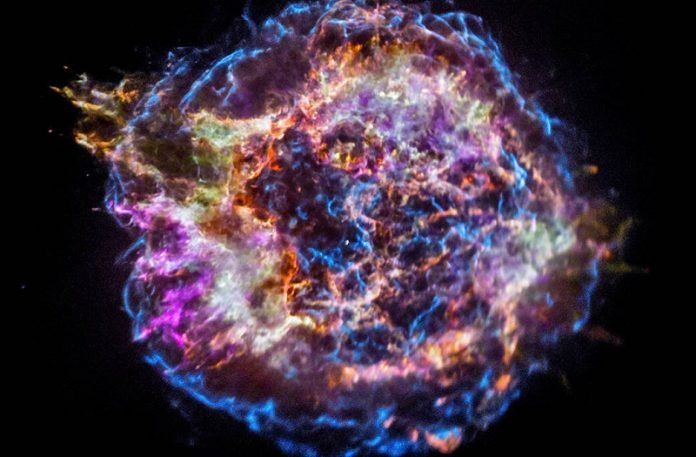
Scientists from Curtin University have made an incredible discovery: a rare piece of dust within an ancient meteorite, revealing secrets from a star far beyond our own Sun.
This remarkable research, led by Dr. Nicole Nevill during her Ph.D., now a researcher at the Lunar and Planetary Science Institute in collaboration with NASA’s Johnson Space Center, takes us on a journey to the stars through the study of a tiny dust particle.
Meteorites, the rocks that reach Earth from space, are mostly made up of materials from our own solar system.
But sometimes, they carry very special passengers—tiny grains of stardust from stars that existed long before the Sun was born.
These presolar grains are microscopic clues to the cosmos, holding within them the tales of ancient stars.
Dr. Nevill and her team used a cutting-edge technique known as atom probe tomography to examine one of these grains in incredible detail, unlocking its chemical secrets atom by atom.
This allowed them to see what the dust is made of and how it differs from anything we find closer to home.
The team discovered that this particular grain of stardust has a unique signature—a ratio of magnesium isotopes (versions of magnesium with different numbers of neutrons) that doesn’t match anything in our solar system.
In fact, the ratio was so unusual that it set a new record, with levels of magnesium isotopes higher than any seen before in similar studies.
This extraordinary finding points to an origin in a very special kind of star: a hydrogen-burning supernova.
Supernovae are massive explosions that mark the death of a star, and a hydrogen-burning supernova is a rare type that scientists have only recently identified.
Dr. David Saxey, another key member of the research team, emphasized how this study pushes the limits of both scientific analysis and our understanding of the stars.
The atom probe technology used in this research has opened up new avenues for examining the makeup of these ancient grains in unprecedented detail.
Professor Phil Bland, also part of the team, highlighted the thrill of connecting lab measurements with celestial phenomena. By studying these rare particles found in meteorites, scientists can glean insights into the workings of the universe that extend far beyond our solar system.
This research, published in the Astrophysical Journal, not only adds a new chapter to our understanding of the cosmos but also showcases the incredible power of modern scientific techniques to unveil the mysteries of the universe, one atom at a time.



